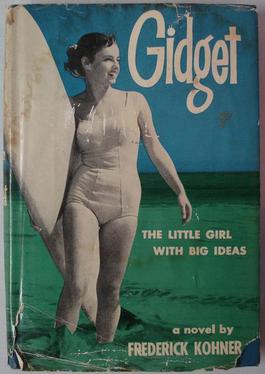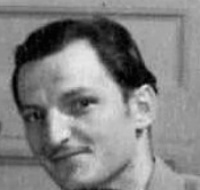
The spy film, also known as the spy thriller, is a genre of film that deals with the subject of fictional espionage, either in a realistic way or as a basis for fantasy. Many novels in the spy fiction genre have been adapted as films, including works by John Buchan, le Carré, Ian Fleming (Bond) and Len Deighton. It is a significant aspect of British cinema, with leading British directors such as Alfred Hitchcock and Carol Reed making notable contributions and many films set in the British Secret Service.

Beautiful Girls is a 1996 American romantic comedy-drama film directed by Ted Demme and written by Scott Rosenberg. Its story follows New York jazz pianist Willie Conway, as he heads back to his hometown of Knight's Ridge, Massachusetts for his high school reunion, where he finds his friends evaluating their lives and relationships. It stars Matt Dillon, Noah Emmerich, Lauren Holly, Timothy Hutton, Rosie O'Donnell, Martha Plimpton, Natalie Portman, Michael Rapaport, Mira Sorvino and Uma Thurman.

Gidget is a fictional character created by author Frederick Kohner in his 1957 novel, Gidget, the Little Girl with Big Ideas. The novel follows the adventures of a teenage girl and her surfing friends on the beach in Malibu. The name Gidget is a portmanteau of "girl" and "midget". Following the novel's publication, the character appeared in several films, television series, and television movies.

Donato Francisco Rico II was an American paperback novelist, screenwriter, wood engraver and comic book writer-artist, who co-created the Marvel Comics characters the Black Widow with plotter Stan Lee and artist Don Heck; Jann of the Jungle with artist Arthur Peddy; Leopard Girl with artist Al Hartley; and Lorna the Jungle Girl with an artist generally considered to be Werner Roth. His pen names include Dan Rico, Donella St. Michaels, Donna Richards, Joseph Milton, and N. Korok.

Vito Giusto Scozzari, also known as Vito Scotti, was an American character actor who played both dramatic and comedy roles on Broadway, in films, and later on television, primarily from the late 1930s to the mid-1990s. He was known as a man of a thousand faces for his ability to assume so many divergent roles in more than 200 screen appearances in a career spanning 50 years and for his resourceful portrayals of various ethnic types. Of Italian heritage, he played everything from a Mexican bandit, to a Russian doctor, to a Japanese sailor, to an Indian travel agent.

Luciana Paluzzi is an Italian actress. She is perhaps best known for playing SPECTRE assassin Fiona Volpe in the fourth James Bond film, Thunderball, but she had important roles in notable films of the 1960s and 1970s in both the Italian film industry and Hollywood, including Chuka, The Green Slime, 99 Women, Black Gunn, The Klansman and The Sensuous Nurse.

Melvin Edward "Slappy" White was an American comedian and actor. He worked with Redd Foxx on the Chitlin' Circuit of stand-up comedy during the 1950s and 1960s. He appeared on the television shows Sanford and Son, That's My Mama, Blossom, and Cybill and in the films Mr. Saturday Night and Amazon Women on the Moon.

The history of the Cinema industry in Puerto Rico predates Hollywood, being conceived after the first industries emerged in some locations of the United States, Switzerland, Denmark, Italy, France, Great Britain and Germany. During the US invasion of the island in 1898, American soldiers brought cameras to record what they saw. By 1912, Puerto Ricans would begin to produce their own films. After the early images recorded by the American soldiers in 1898, most of the films produced in the island were documentaries. It wasn't until 1912 that Rafael Colorado D'Assoy recorded the first non-documentary film titled Un drama en Puerto Rico. After that, Colorado and Antonio Capella Martínez created the Film Industrial Society of Puerto Rico in 1916, producing their first film titled Por la hembra y el gallo. Other film companies formed during the time were the Tropical Film Company (1917) and the Porto Rico Photoplays (1919). Puerto Rico was the second Latin American market to produce a sound film, filming Luis Pales Matos's script for Romance Tropical (1934). The film featured Jorge Rodríguez, Raquel and Ernestina Canino, Sixto Chevremont and Cándida de Lorenzo. In the late 1930s Rafael Cobián produced films starring Blanca de Castejón such as Mis dos amores and Los hijos mandan at Hollywood. In 1951, he would produce Mi doble with San Juan as its setting. Mapy and Fernando Cortés would also participate in the Hollywood industry, as well as throughout Latin America.

Valora Noland was an American actress, notable for her 1960s movie and television work, and, in her later years, photographer and author.
This is a bibliography of works by Damon Knight.
Lancer Books was a publisher of paperback books founded by Irwin Stein and Walter Zacharius that operated from 1961 through 1973. While it published stories of a number of genres, it was noted most for its science fiction and fantasy, particularly its series of Robert E. Howard's Conan the Barbarian tales, the first publication of many in paperback format. It published the controversial novel Candy by Terry Southern and Mason Hoffenberg, and Ted Mark's ribald series The Man from O.R.G.Y. Lancer paperbacks had a distinctive appearance, many bearing mauve or green page edging.

Louisa Moritz was a Cuban-American actress and lawyer. After arriving in New York from Cuba, she became a film and television actress, then earned a law degree. She is best known for her roles in One Flew Over the Cuckoo’s Nest and the television show Love, American Style.

Solomon and Sheba is a 1959 American epic historical romance film directed by King Vidor, shot in Technirama, and distributed by United Artists. The film dramatizes events described in The Bible—the tenth chapter of First Kings and the ninth chapter of Second Chronicles.

The Man from C.A.M.P. is a series of ten gay pulp fiction novels published under the pseudonym of Don Holliday. The original nine were written by Victor J. Banis between 1966 and 1968; a tenth by an uncertain author appeared in 1971. The series first emerged during a period when gay paperback titles began spoofing popular genre fiction. As such, they are part of the great gay paperback explosion that "catered to most every taste in men's genre fiction," including detective stories and spy thrillers. According to Banis, the series was inspired by the characters Batman and Robin, and is a spoof of the James Bond series and the television show The Man from U.N.C.L.E.
Richard Edward Wormser was an American writer of pulp fiction, detective fiction, screenplays, and Westerns, some of it written using the pseudonym of Ed Friend. He is estimated to have written 300 short stories, 200 novelettes, 12 books, many screenplays, and stories turned into screenplays, and a cookbook: Southwest Cookery or At Home on the Range.
Warren Billy Smith, was an American author best known for his books on cryptozoology, UFOs and the hollow earth theory. In addition he authored a large number of historical romance and western novels.
Victor Payumo Silayan, commonly known as Vic Silayan, was a Filipino actor who is best known for his roles in Kisapmata (1981) and Karnal (1983).

The Do-Over is a 2016 American black comedy buddy action film directed by Steve Brill, and written by Kevin Barnett and Chris Pappas. The movie follows Charlie and Max after Max fakes their deaths in order to start their lives anew. Things go awry when they discover that the dead men whose identities they have adopted were entangled in criminal activities. Paula Patton, Kathryn Hahn, and Luis Guzmán also star.
Elaine I. Duillo was an American painter and illustrator known for her romance fiction book covers. She was inducted into the Society of Illustrators Hall of Fame in 2003.
James Duncan Lawrence, best known as Jim Lawrence, was an American author best known for authoring most of the Tom Swift Jr. series of books and Friday Foster comic strip.












